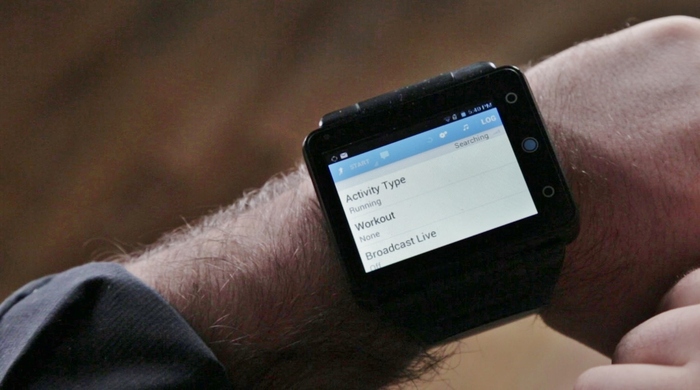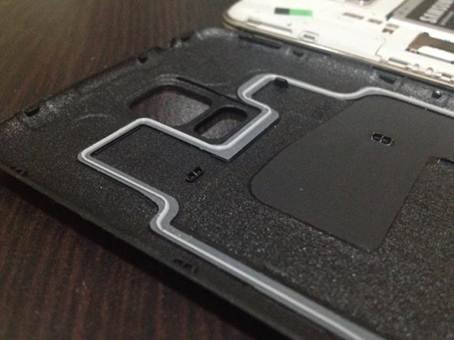Though we only covered the Neptune Pine in passing when discussing how some campaigns like to quote publications that summarize their own words, some of their recent project updates have created quite a stir that deserves brief discussion.
Switch Carriers
Part of the original appeal of the Neptune Pine was that unlike the Samsung Galaxy Gear or Pebble Smartwatch which have to pair to an internet enabled bluetooth device, this device could be used as a standalone cellular telephone with its own CDMA or GSM band radio.
CDMA and GSM are two different technologies for transmitting data wirelessly over long distances. The former is most commonly associated with Verizon and Sprint carriers in the US while the later works with AT&T and T-Mobile. It’s also worth noting that GSM has a near-monopoly in foreign markets where many phone plans are sold separately from phones. The use of SIM cards with that system makes it easy to purchase a number and data plan from a carrier and add it to a phone purchased elsewhere.
Unfortunately for those users who use Sprint or Verizion, Neptune Pine announced mid-May that they have cancelled the CDMA version of the device citing “the long certification process individual carriers require for operation on the CDMA network” as the reason behind their decision.
Strangely, they clarified a few days later that backers who ordered the CDMA model will be automatically switched to the GSM model. This seems like an odd decision seeing how just about every user in the US anyway is deeply entrenched in long service contracts that don’t allow them to switch carriers on a whim.
They also offered the option of a refund for anyone displeased with their decision, but they have been slow to respond to refund requests. They’re reporting that only 20% of refunds requests have been handled so far which seems to match up with backer complaints:
They stated that the deadline for requesting refunds is just a week out (June 6th) meaning that backers who haven’t been following closely will lose their opportunity to get their $300+ back if they aren’t quick on the draw.
Likewise, the NFC-enabled version of the watch was also cancelled “for reasons of size, interference and software complications”. Strangely, the team’s first response was to automatically upgrade backers who selected the $279 8-gig NFC enabled watch to the $269 16-gig version. Only after a backer pointed out that their upgrade was actually a $10 downgrade did the team change the upgrade option to the $289 32-gig version.
This is a rather haphazard way of handling a product line cancellation that is probably largely due to the small percentage of backers who actually chose the NFC option: just 61 of several thousand.
The waterproof is in the pudding
Almost unprecedented for a device as complicated as the Neptune Pine, the team advertised that the Pine will have an IP67 waterproof rating. This is the IP Code famously shared by the Samsung Galaxy S5 which means that it is dust tight and can withstand immersion in water at a depth of one meter for at least 30 minutes.
Samsung achieved this level of waterproofing using a series of rubber o-rings and gaskets that keep water from seeping between the enclosure panels:
Getting a good water-tight seal all around a device as complicated as a smartphone is no small feat which is why it’s such a great selling feature for Samsung.
This is not the only way to waterproof a device however. Liquipel is a company offering consumer-grade device waterproofing for under $100. Their technology operates using a special process in which the device is placed in a vacuum chamber with a polymer that turns from liquid to gas. Using some spiffy chemistry, this polymer is eventually bonded to the device’s surfaces leaving an extremely thin and even coat. This is just one example of a category of processes known as conformal coating. The general theme is that a protective material is applied evenly to the surfaces inside a device to protect them from electrical problems introduced by water ingress. Unlike the Samsung solution which seals water out of internal spaces, conformal coating will still allow water into the device. It just won’t allow the water to affect the device’s normal operation.
With so many options for waterproofing, it was startling to read in the most recent update that the Neptune Pine team is planning to use NeverWet, a commercially available waterproofing spray from Rustoleum.
Not content to just protect materials from water, NeverWet’s selling point is that its super hydrophobic coating uses nanotechnology to make water, chocolate syrup, mustard, mud, and other liquids simply slide off of fabrics and other surfaces like marbles on glass. I’m sure you’ve all seen the videos:
While this does effectively “waterproof” these surfaces, the major selling point is that the liquids don’t stick making the surfaces easier to clean, and in the case of a toilet brush or plunger, more hygenic.
While the NeverWet team has demonstrated that the material can be used to waterproof an iPhone, other reviewers have had trouble reproducing those results 1 2 and also cited that the substance flakes off in a number of days and breaks down when exposed to UV light. In fact, Andy Jones, President of Neverwet stated in an interview with Lancaster Online that he was contacted by Rust-Oleum after posting the iPhone waterproofing video and asked to stop making any claims about electronics or clothing. “They didn’t want to endorse using NeverWet on either type of product.”
With all of this in mind, it makes one wonder why the Neptune Pine team would choose NeverWet as their waterproof coating of choice. It could have something to do with regulatory concerns as apparently their manufacturer had issues with their first few choices:
We selected and shipped a water resistant treatment compound to the manufacturer, only to discover that the material is highly toxic and demands a special process and machinery which our manufacturer can’t provide. So Aaron researched and shipped an alternate compound that is being tested this week.
Aaron has been pulling his hair out trying to get the appropriate waterproofing chemicals integrated into the assembly process. The manufacturer couldn’t work with the first two compounds we selected because of equipment needs and safety concerns. Our third try is currently in transit from the South African supplier to our Chinese manufacturer. We hope to have this solved next week.
Perhaps NeverWet is a last-ditch effort to deliver on their waterproofing promise? It can be applied without much specialized equipment and is already deemed safe enough for general consumer sale, but it was also specifically called out by its manufacturer as being unsuitable for this kind of task.
If they really are having trouble with their manufacturer, it makes one wonder why they selected that manufacturer in the first place when an IP67 rating was among the features announced at the beginning of their campaign.
Coming soon
The one refreshing change with the most recent update is an incredibly detailed recount of exactly the problems they’ve been having with FCC certification. Hopefully this will be enough to calm the nerves of frustrated backers who are becoming restless as the device slips into its 3rd month of delays.






Leave a Reply